Abstract
An intensive programme of residual spraying with DDT carried out over a period of 5 years in Taiwan has reduced malaria morbidity to a very low level. Since 1955, the goal has been complete eradication. Some foci of transmission and/or infection remain, however, and although no resistance problems have been encountered, the principal vector, A. minimus minimus, is still widely distributed. An elaborate surveillance organization is now in the process of creation, with the object of detecting and eliminating all residual foci of transmission and preventing the importation of fresh cases. It is hoped to complete eradication in another 3-5 years.
Full text
PDF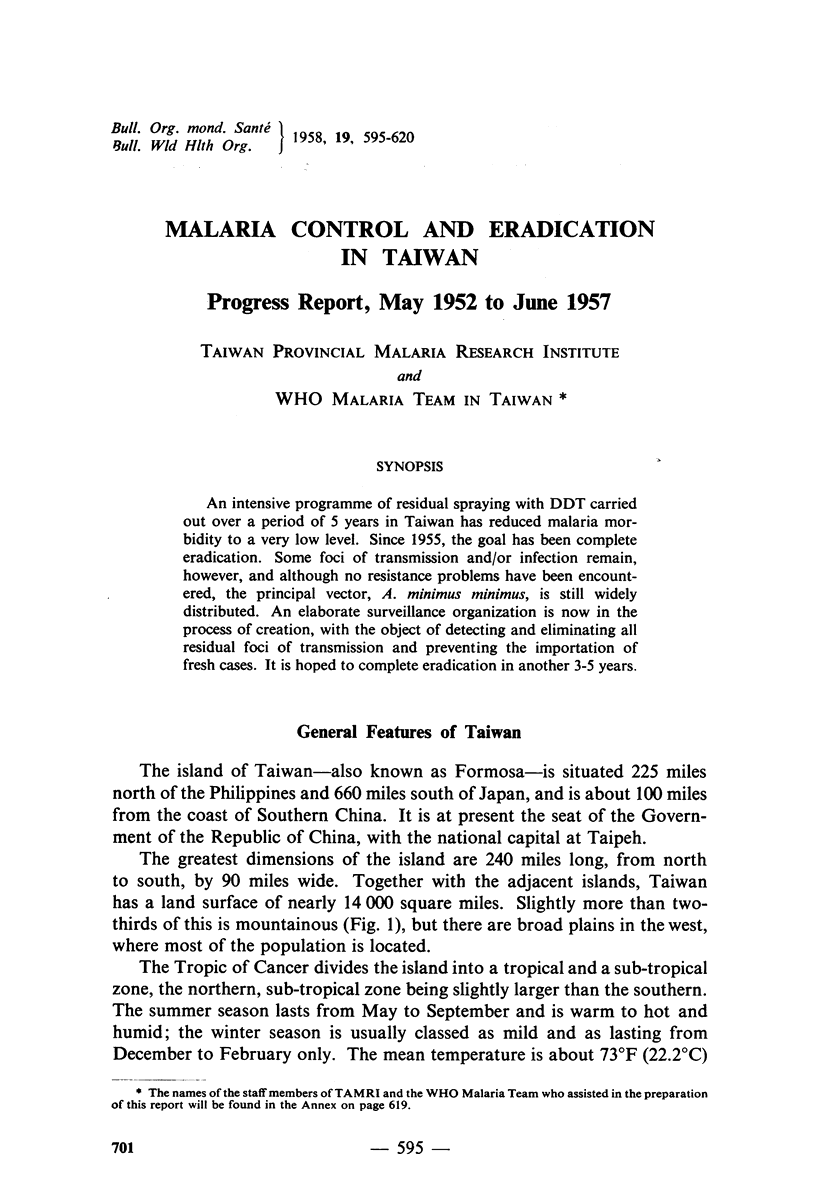
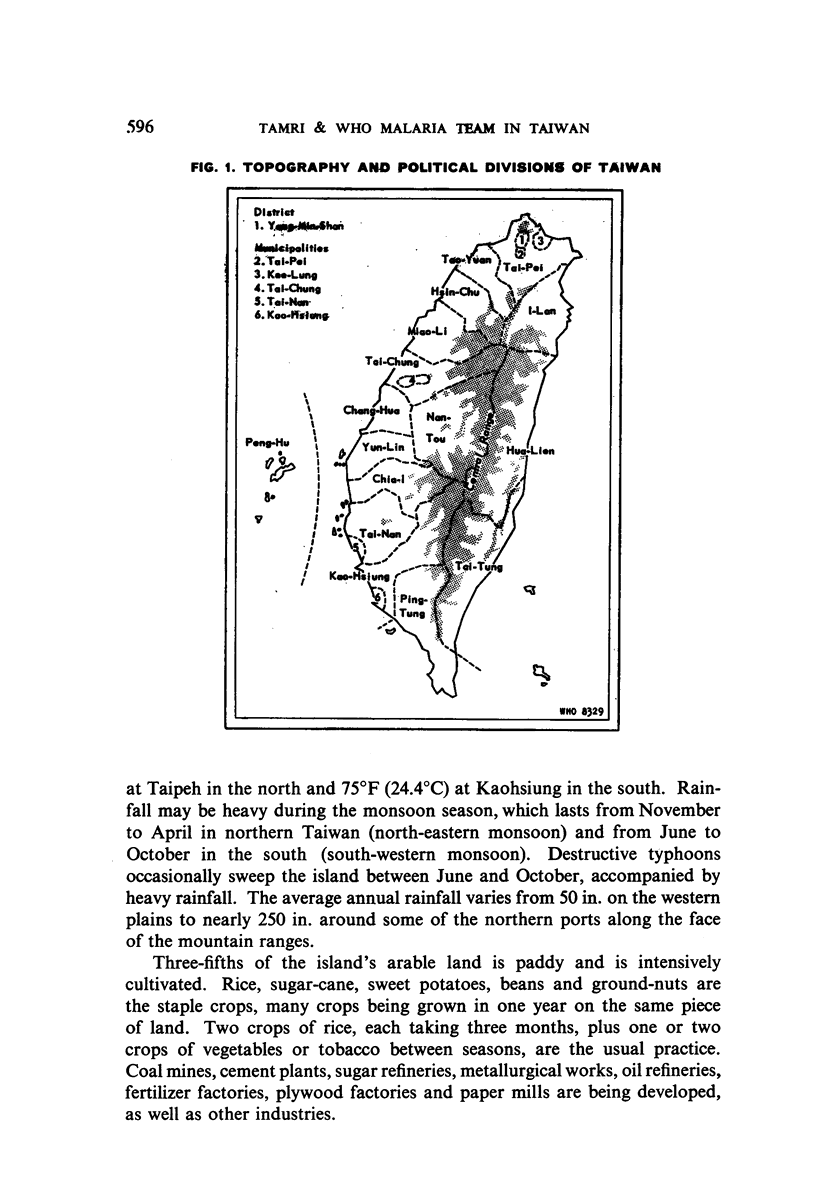
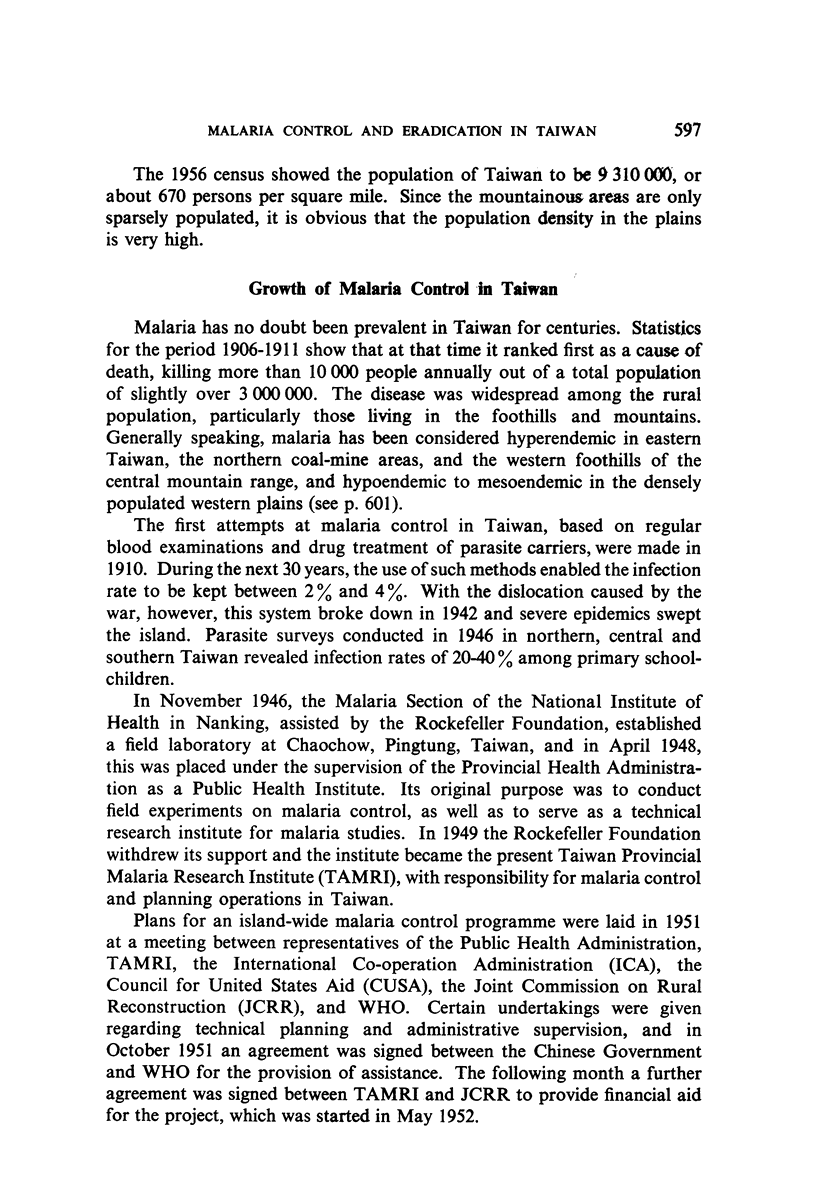
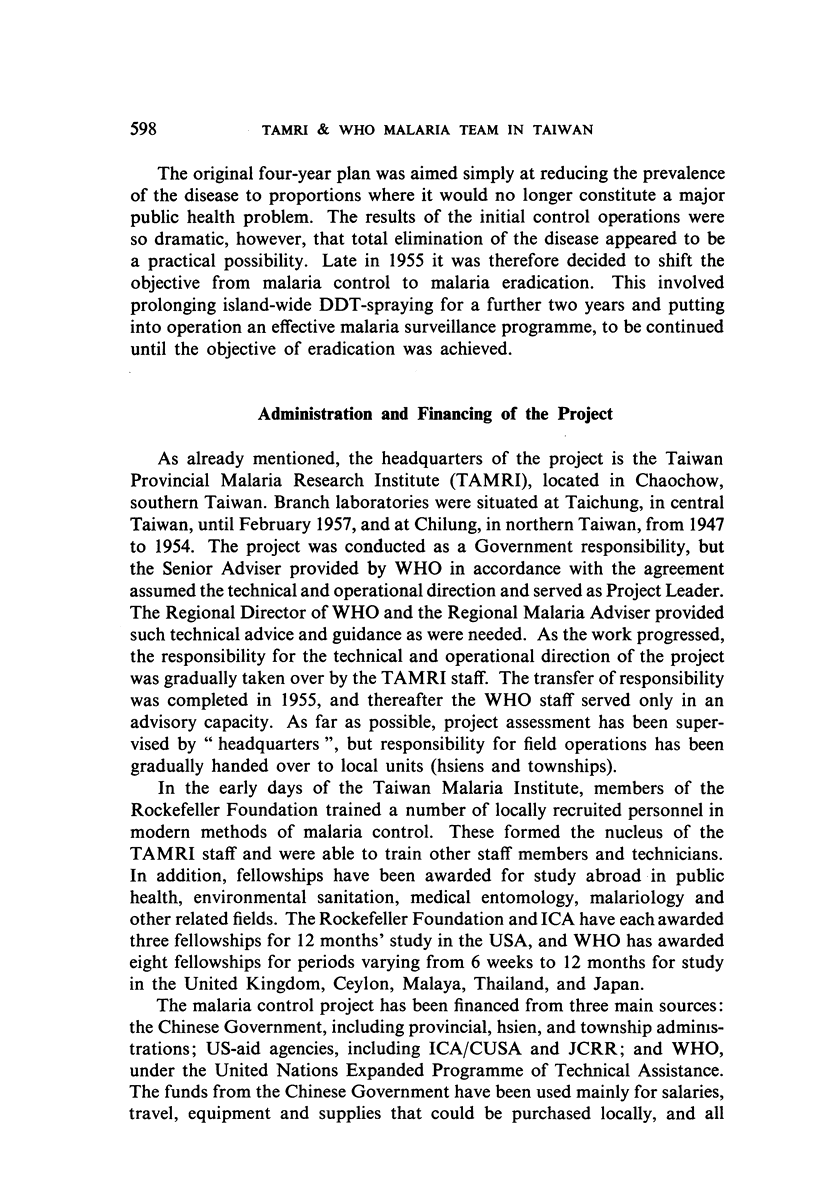

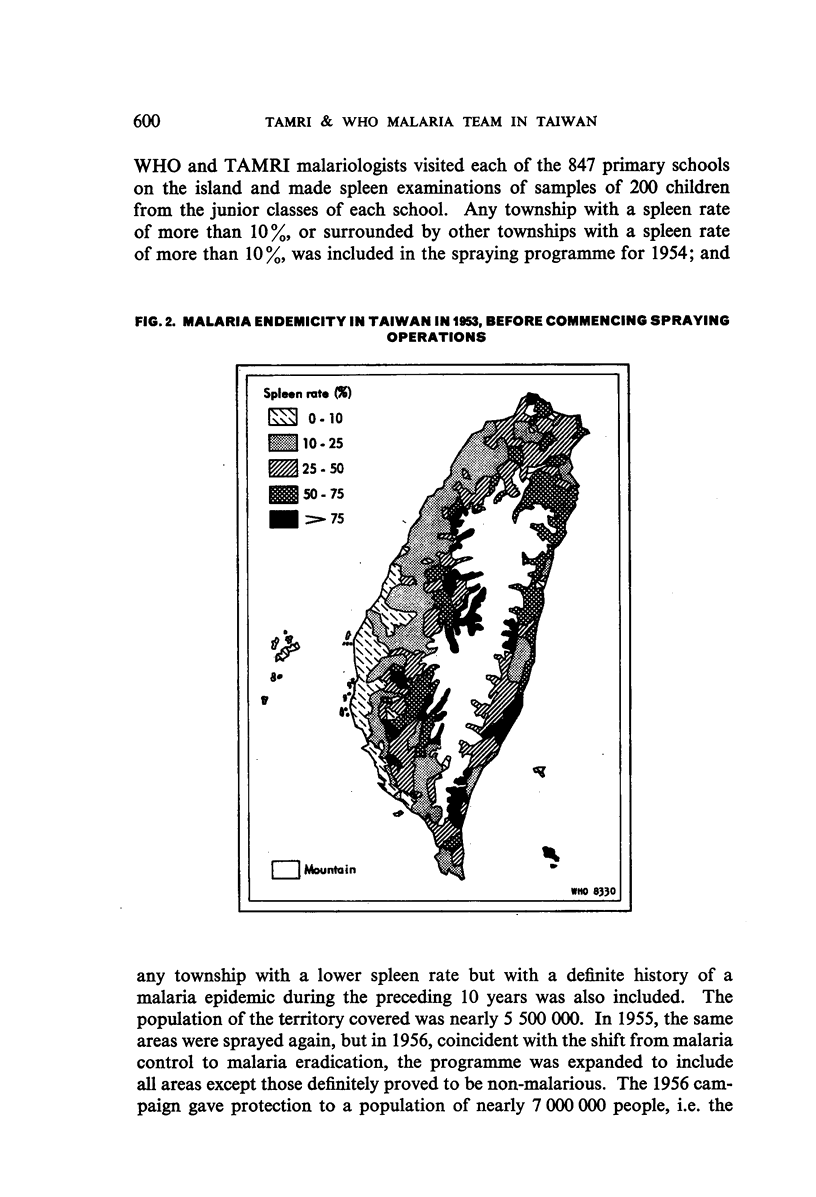
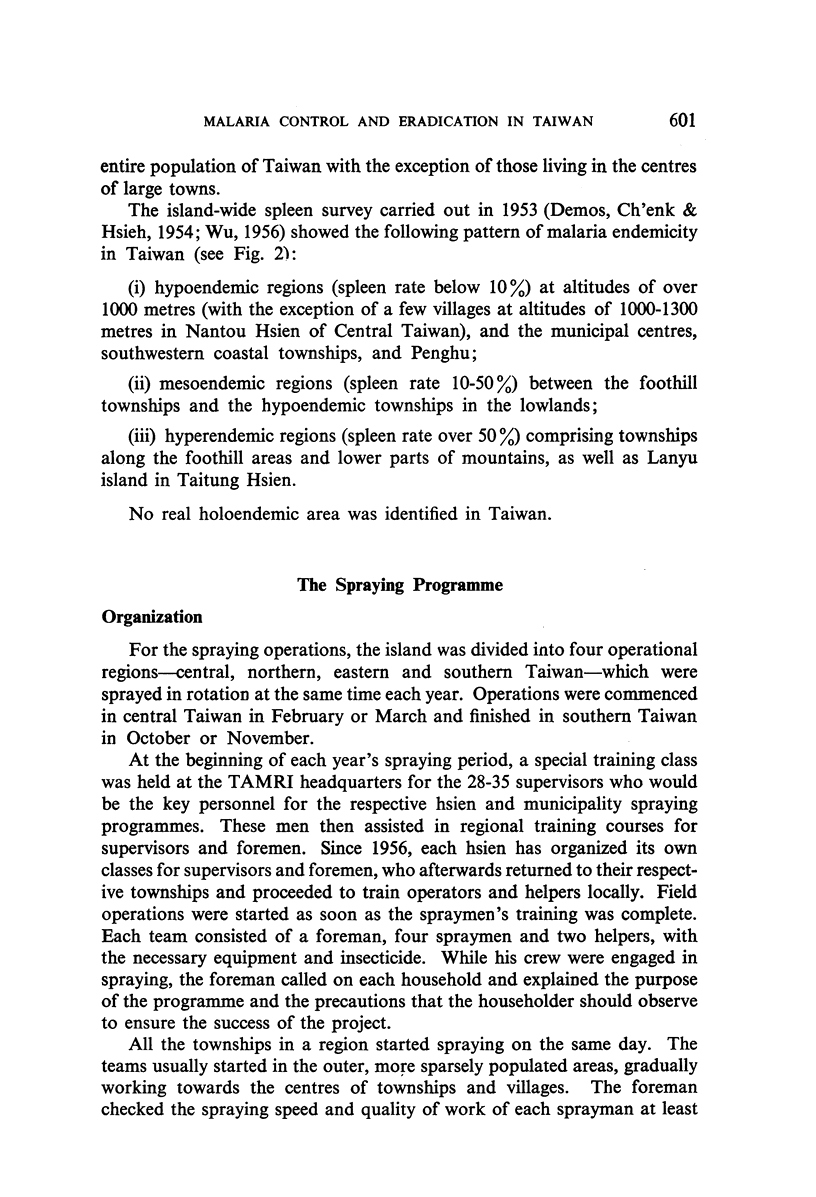
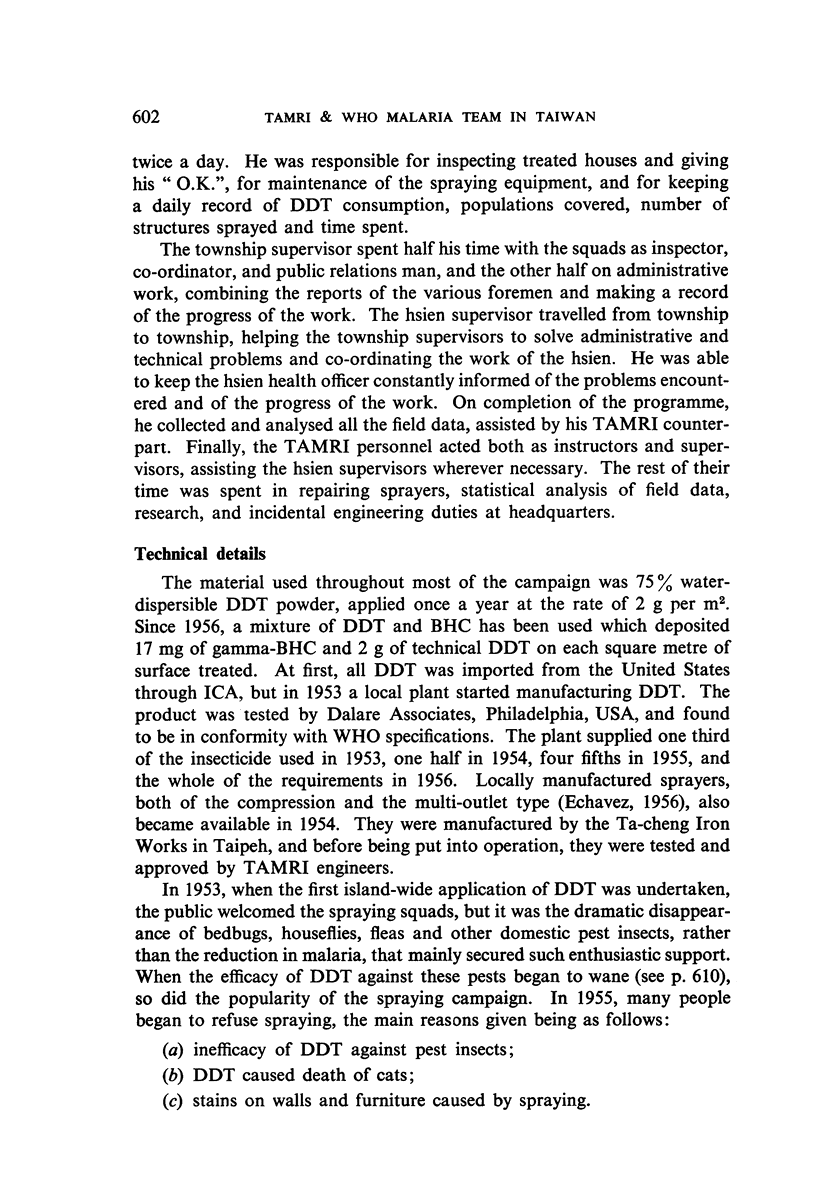
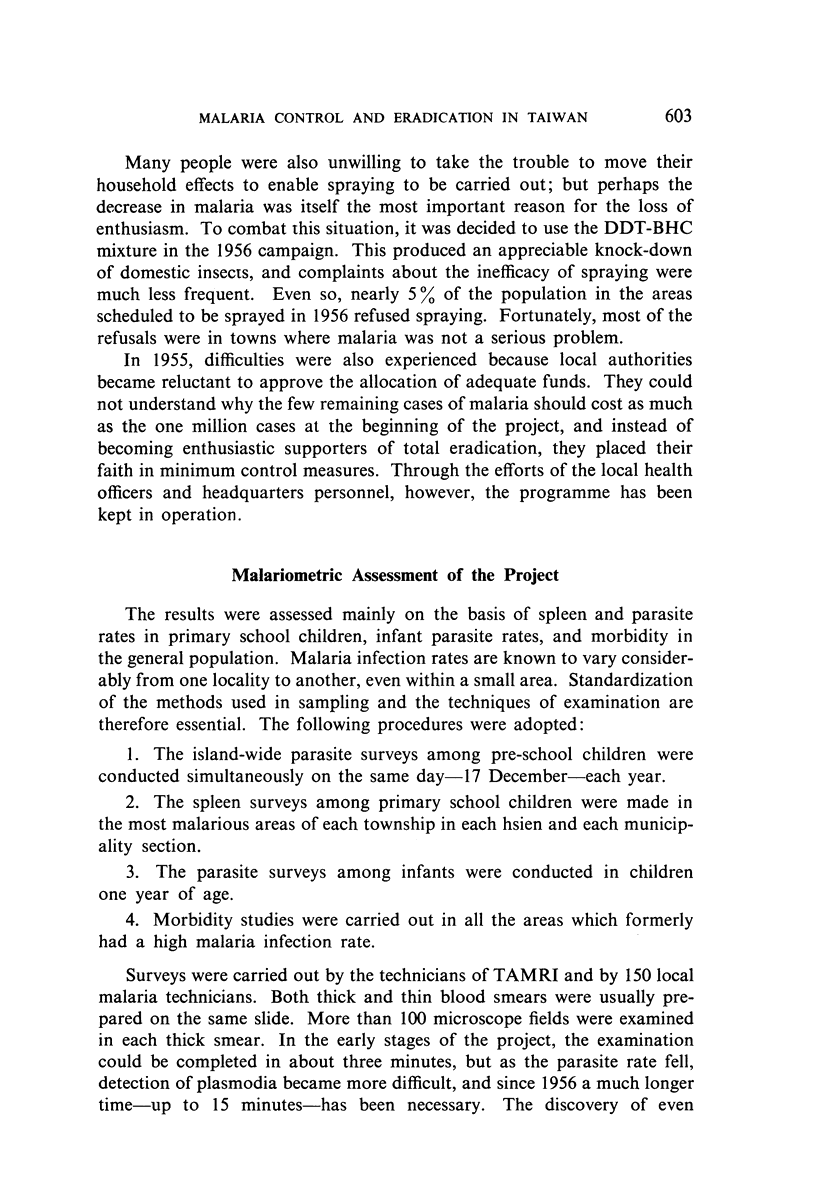
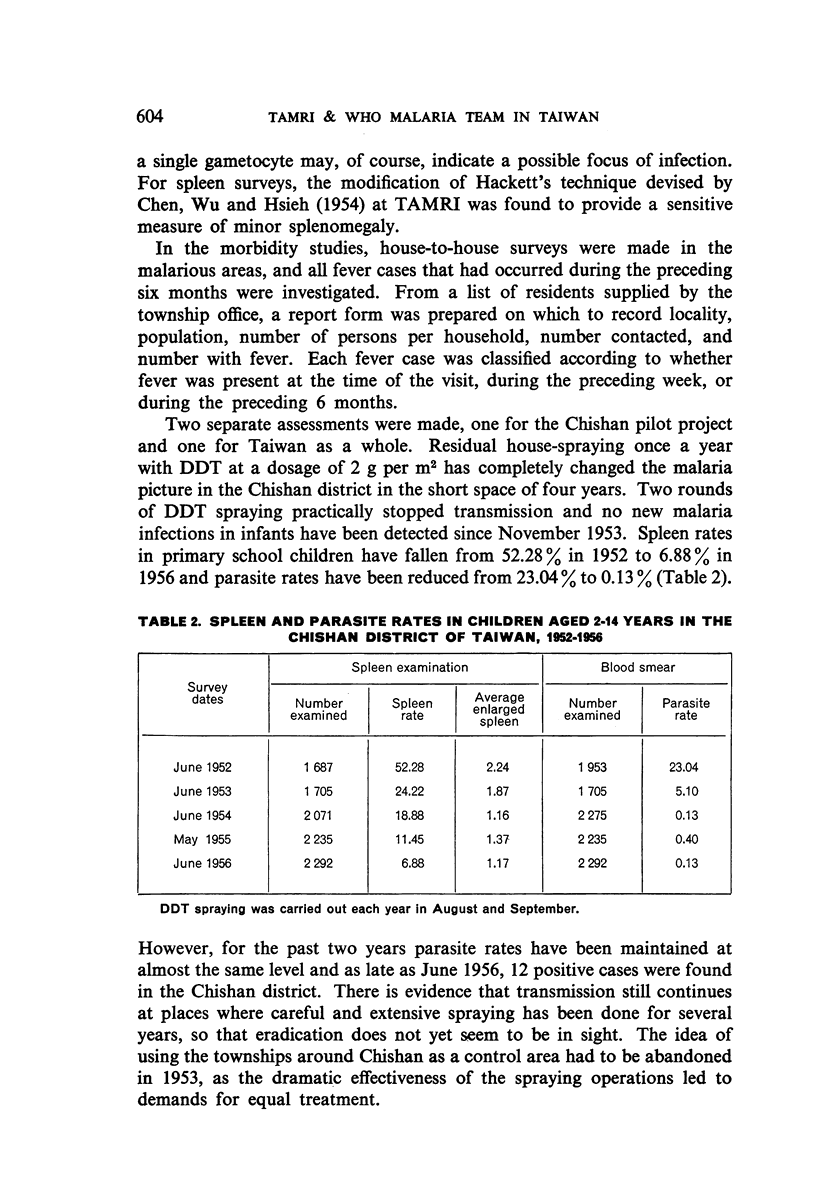
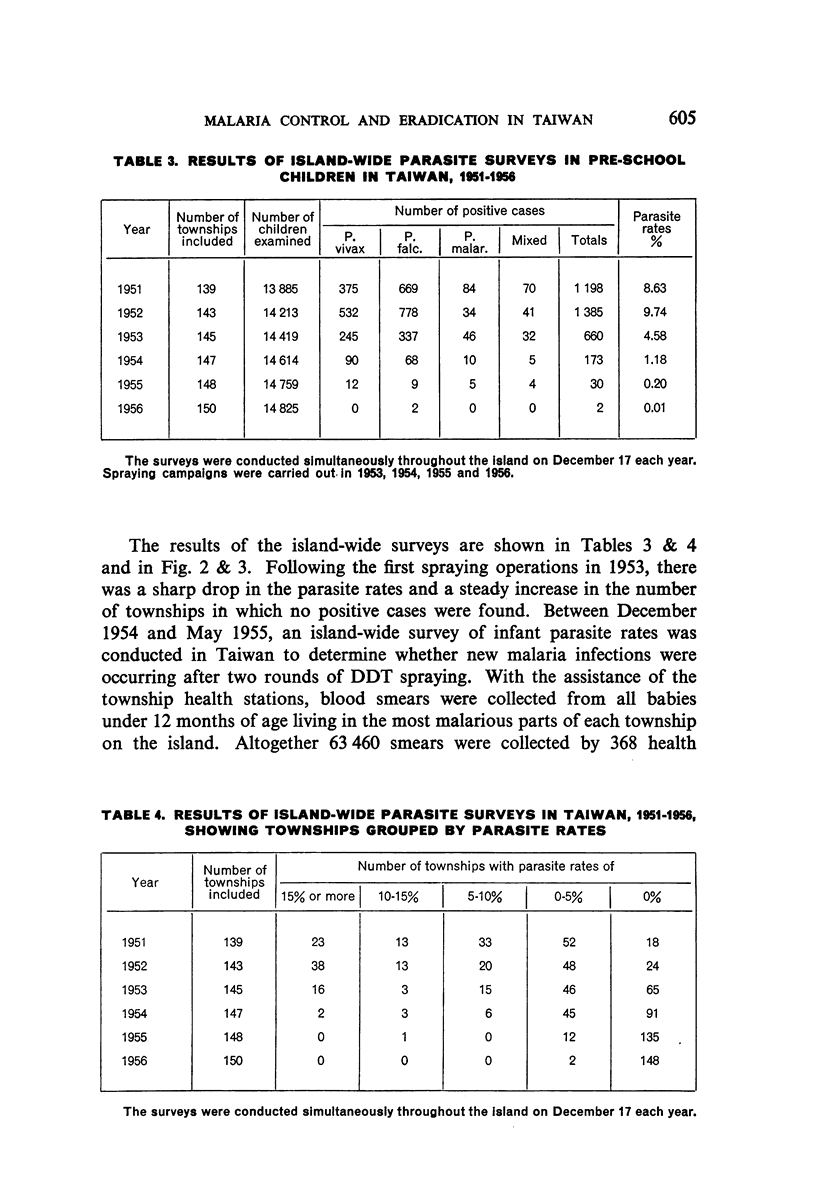
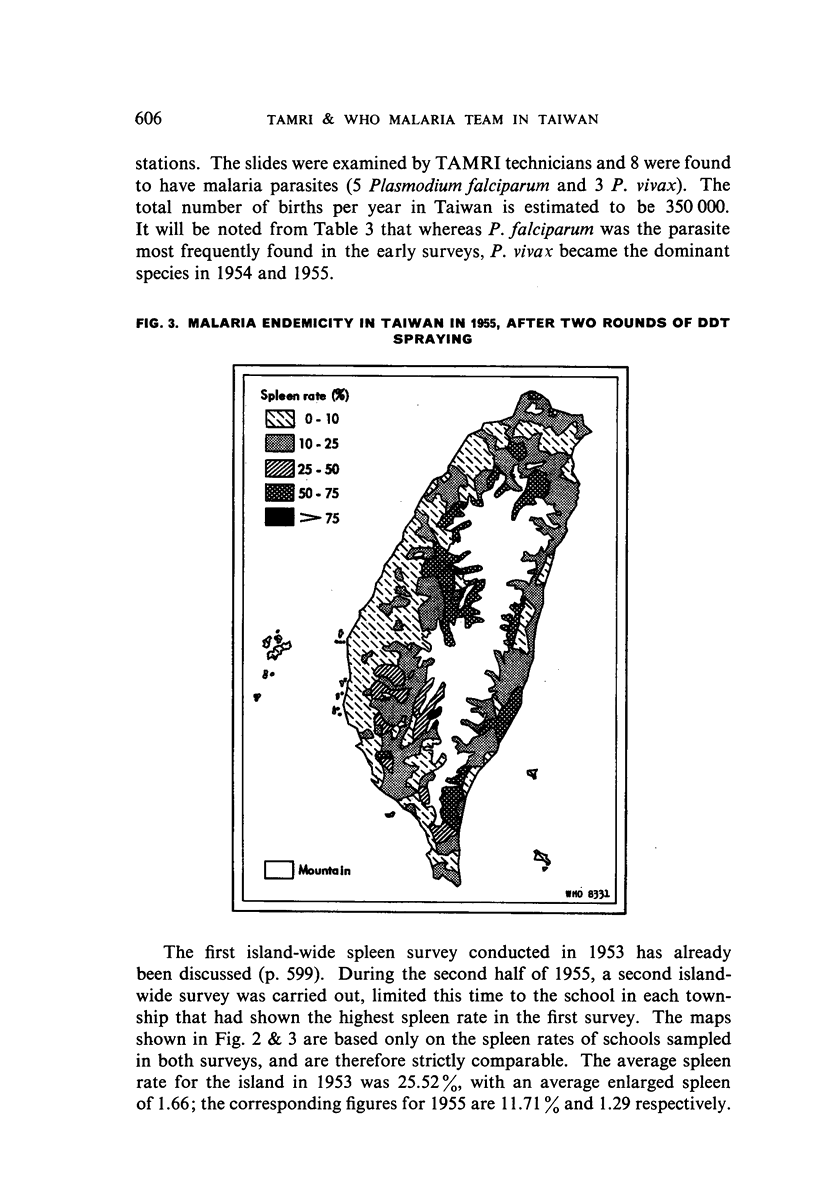
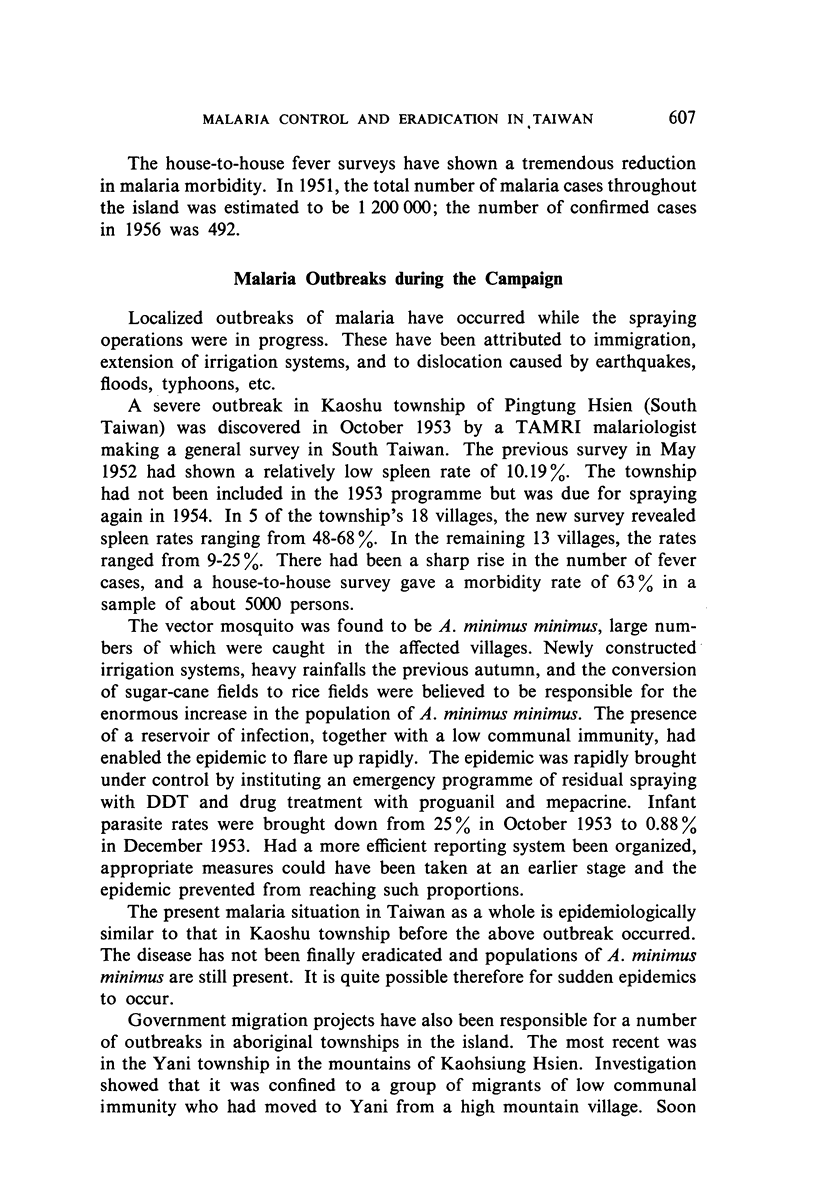
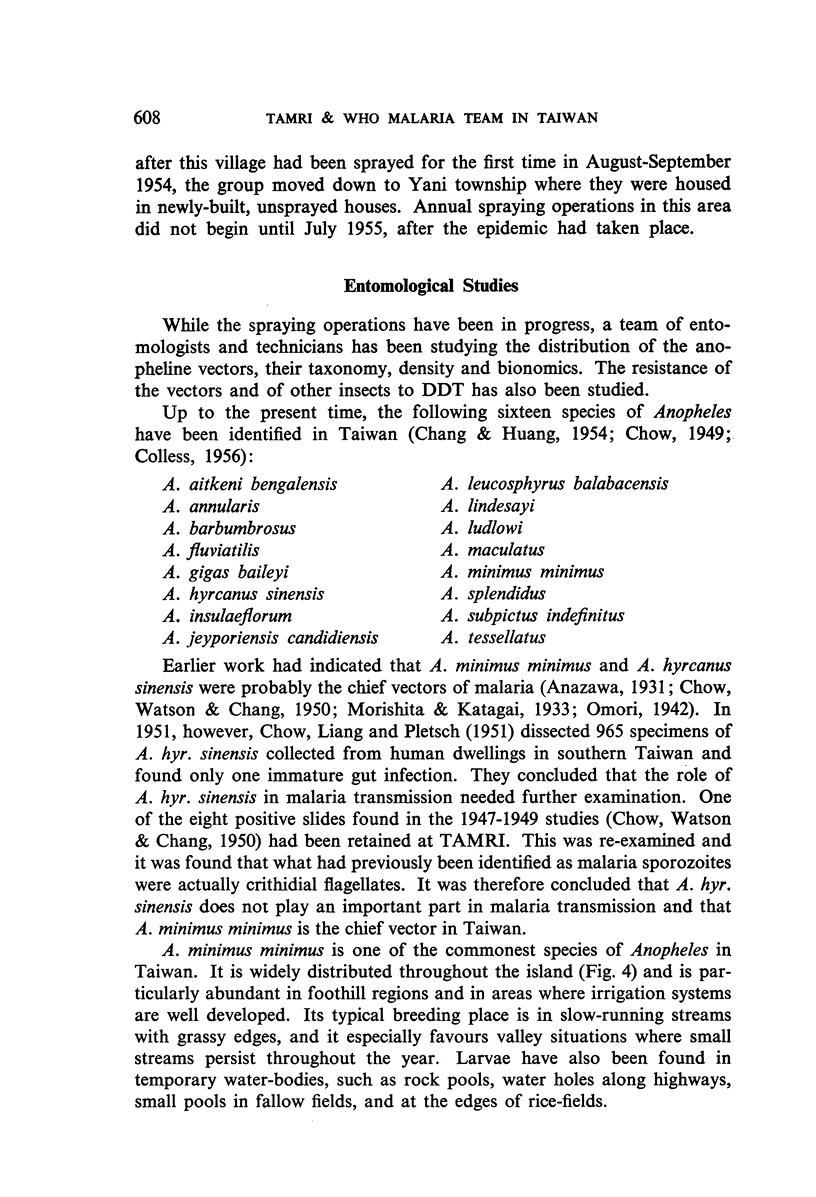
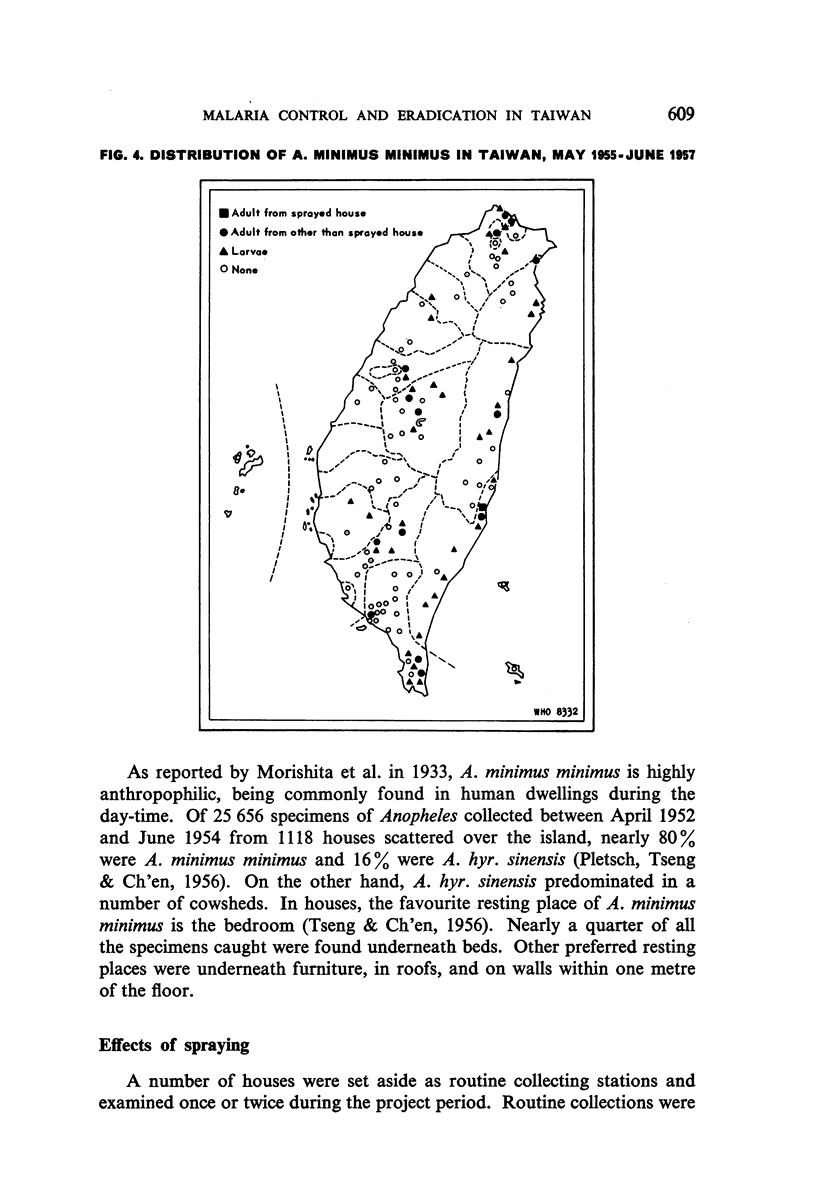
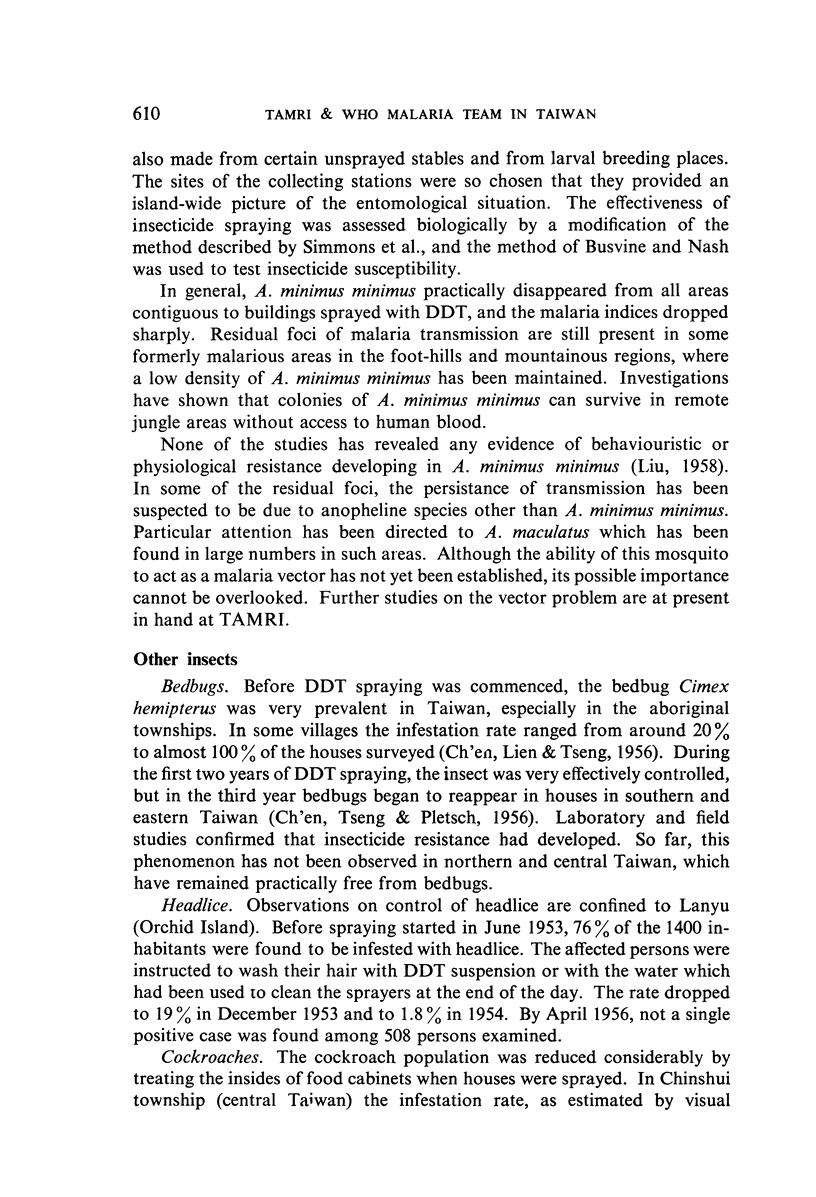
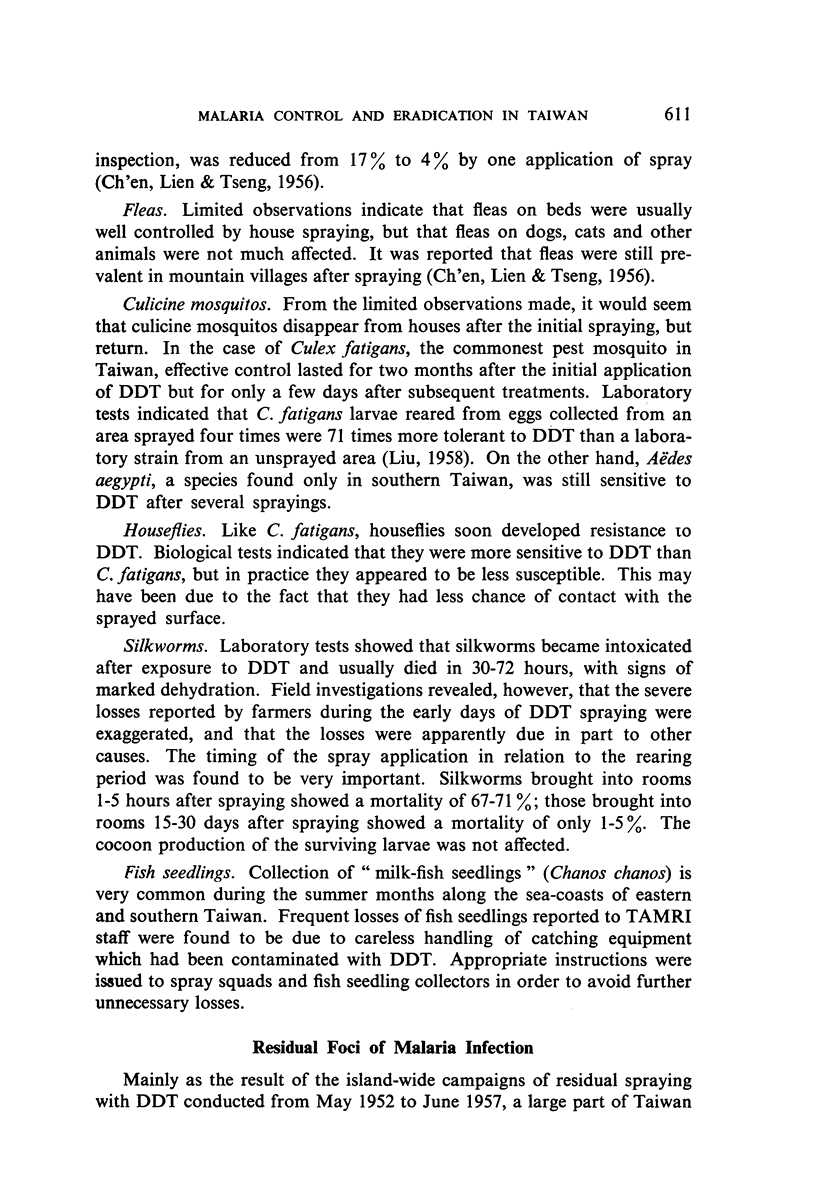
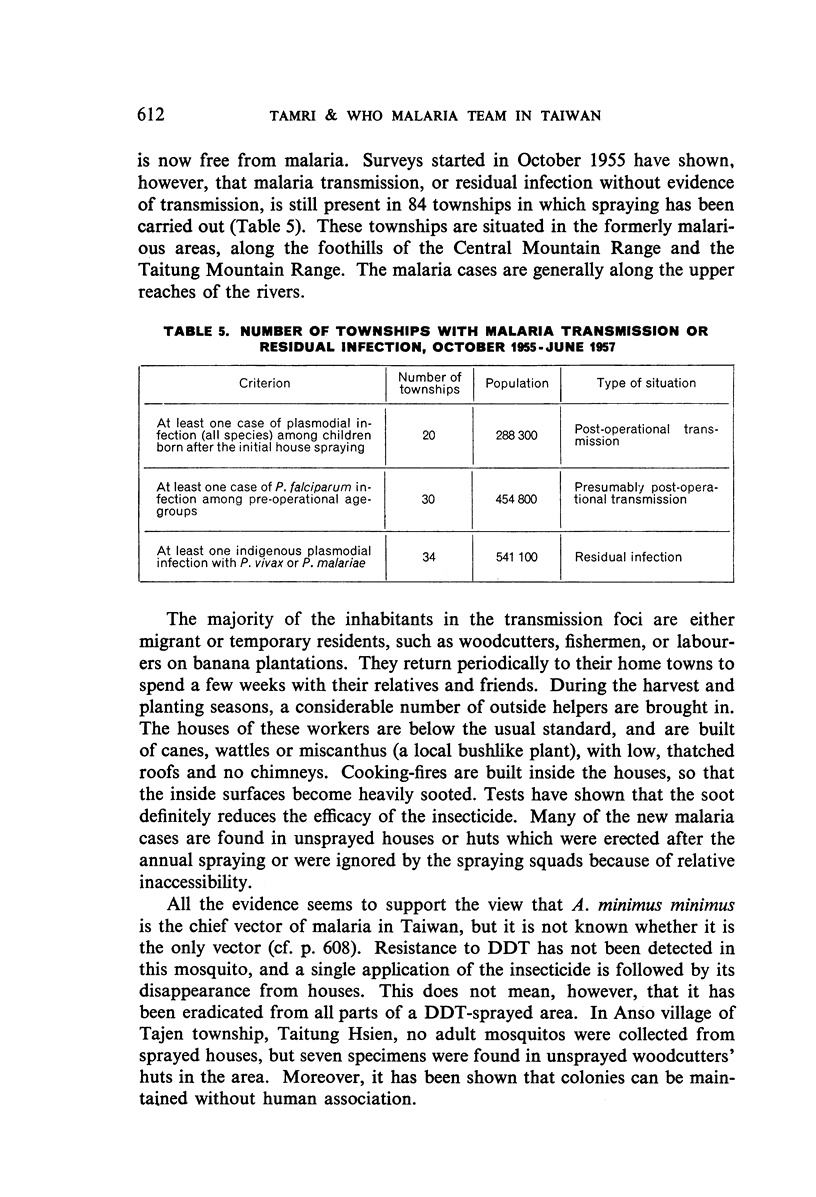
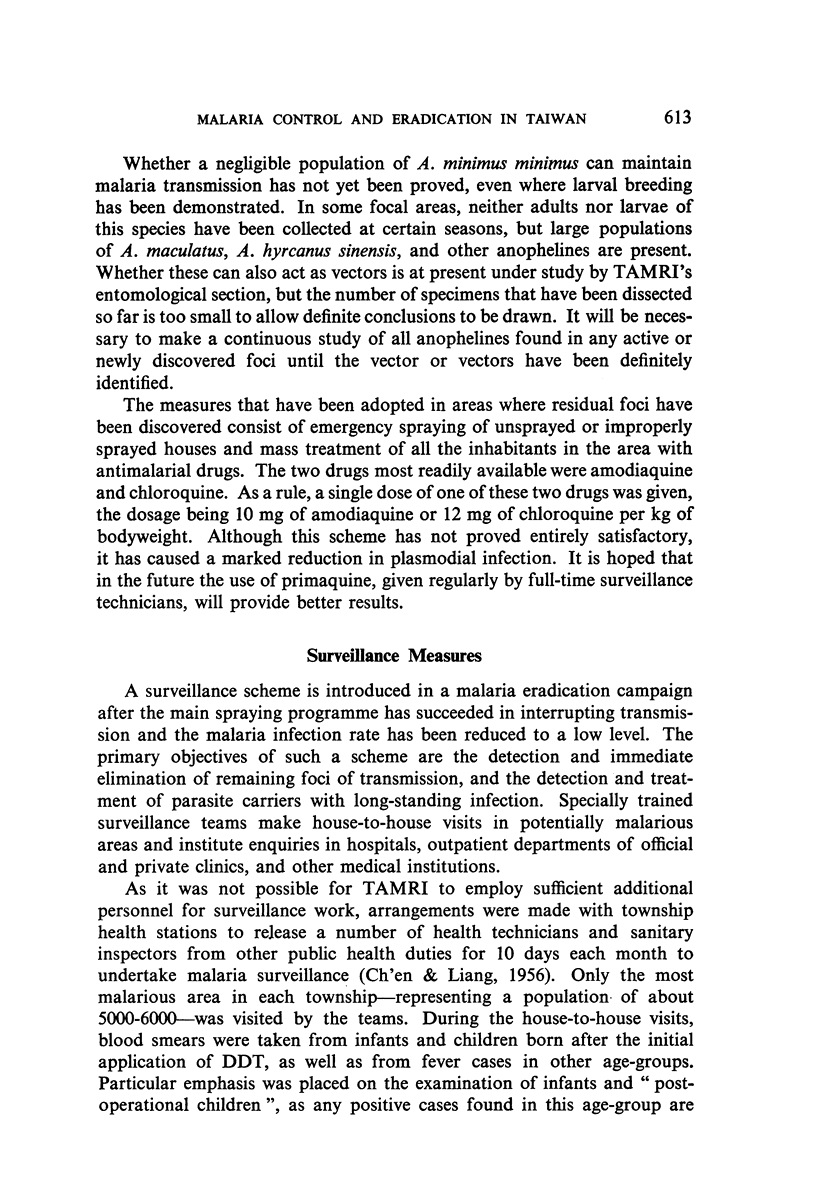
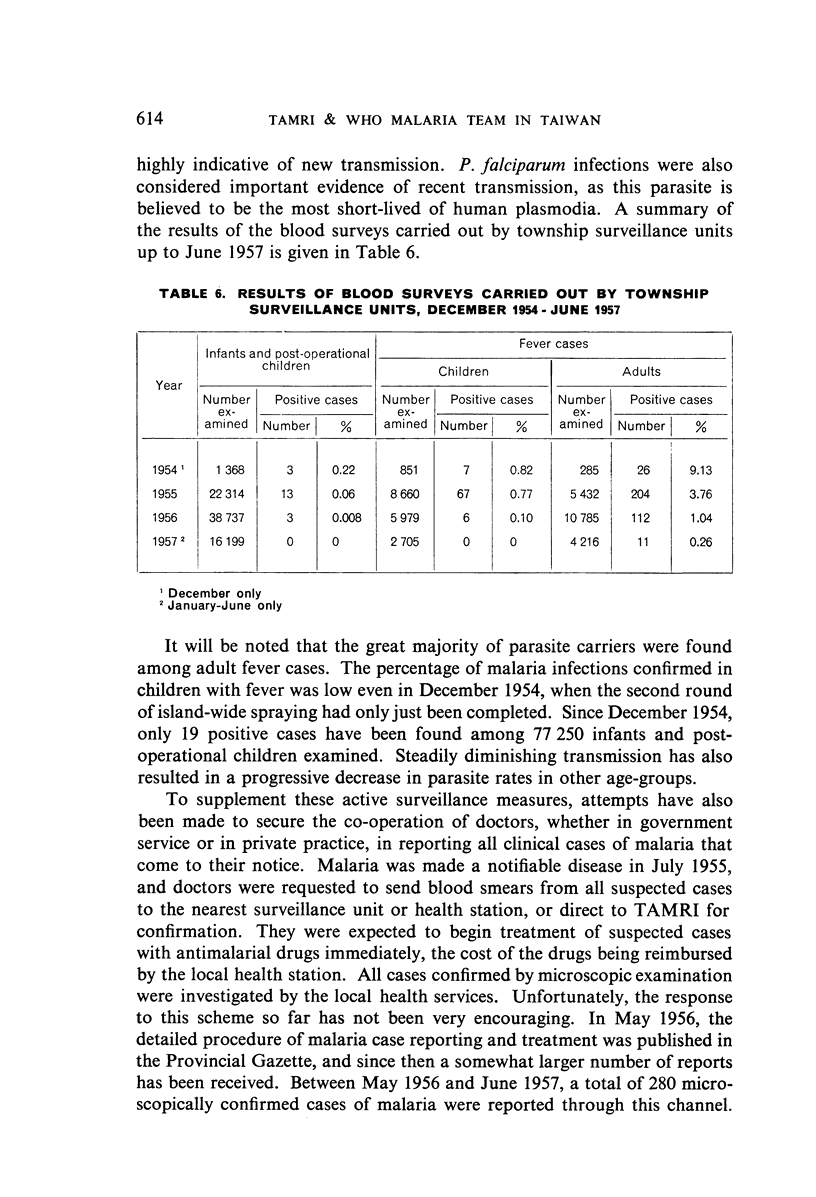
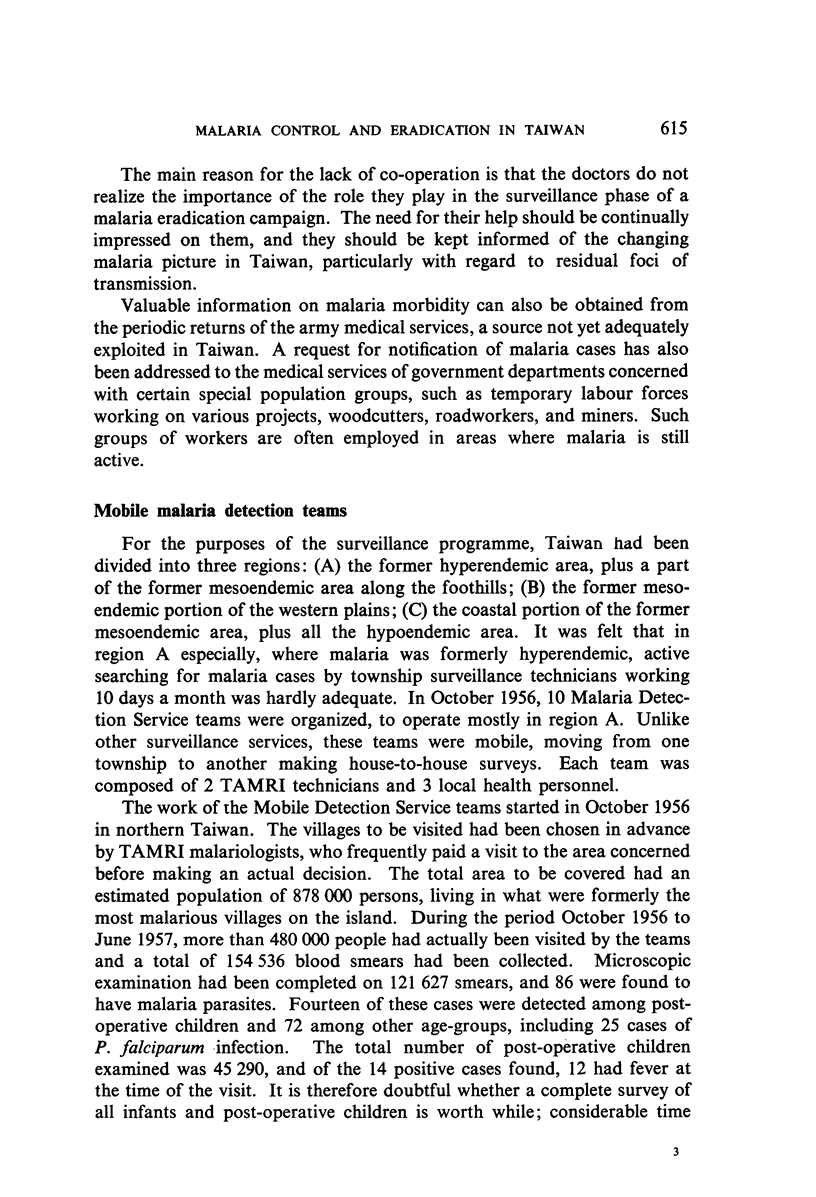

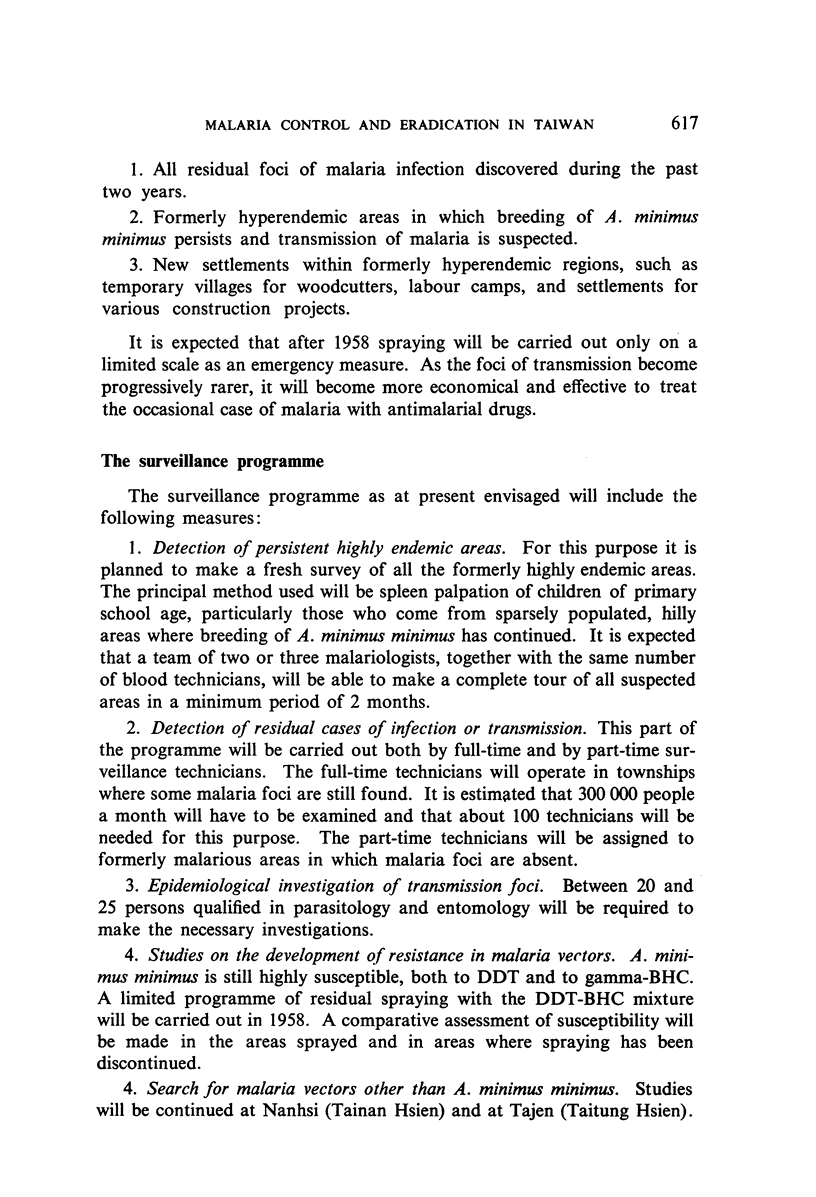
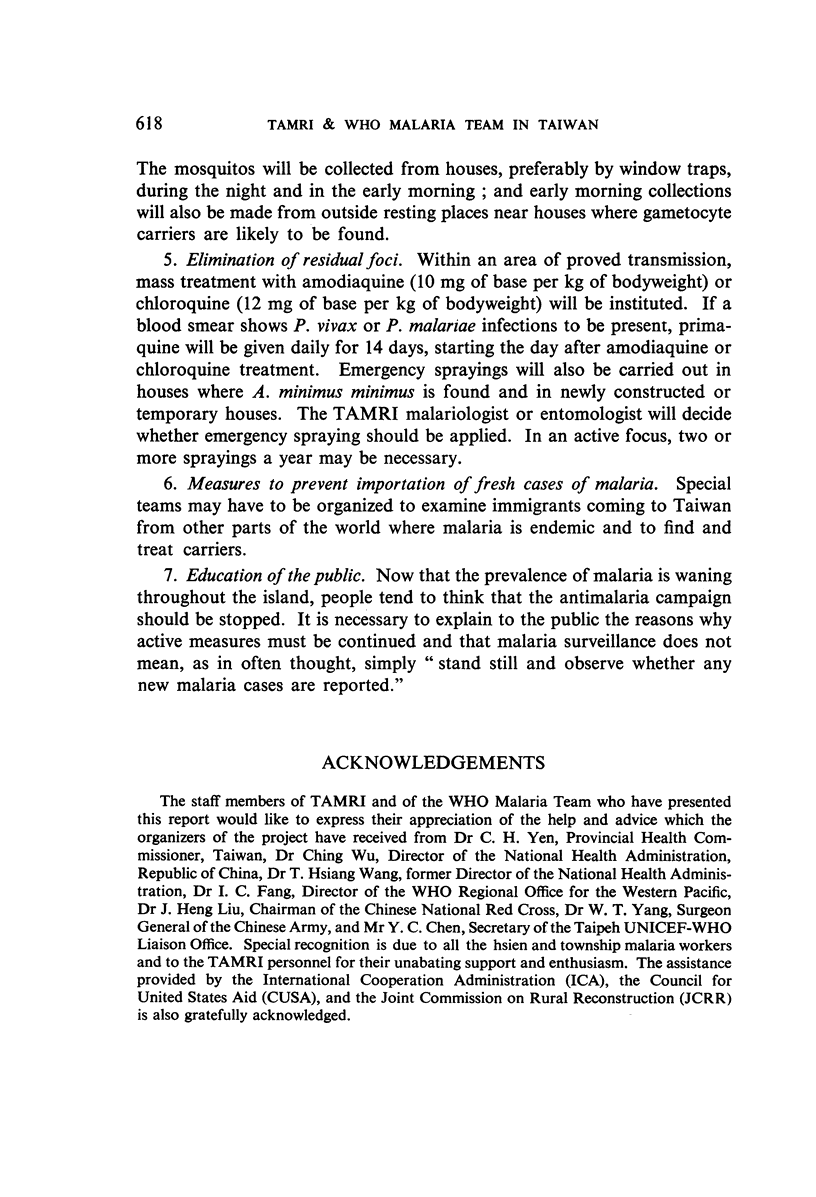
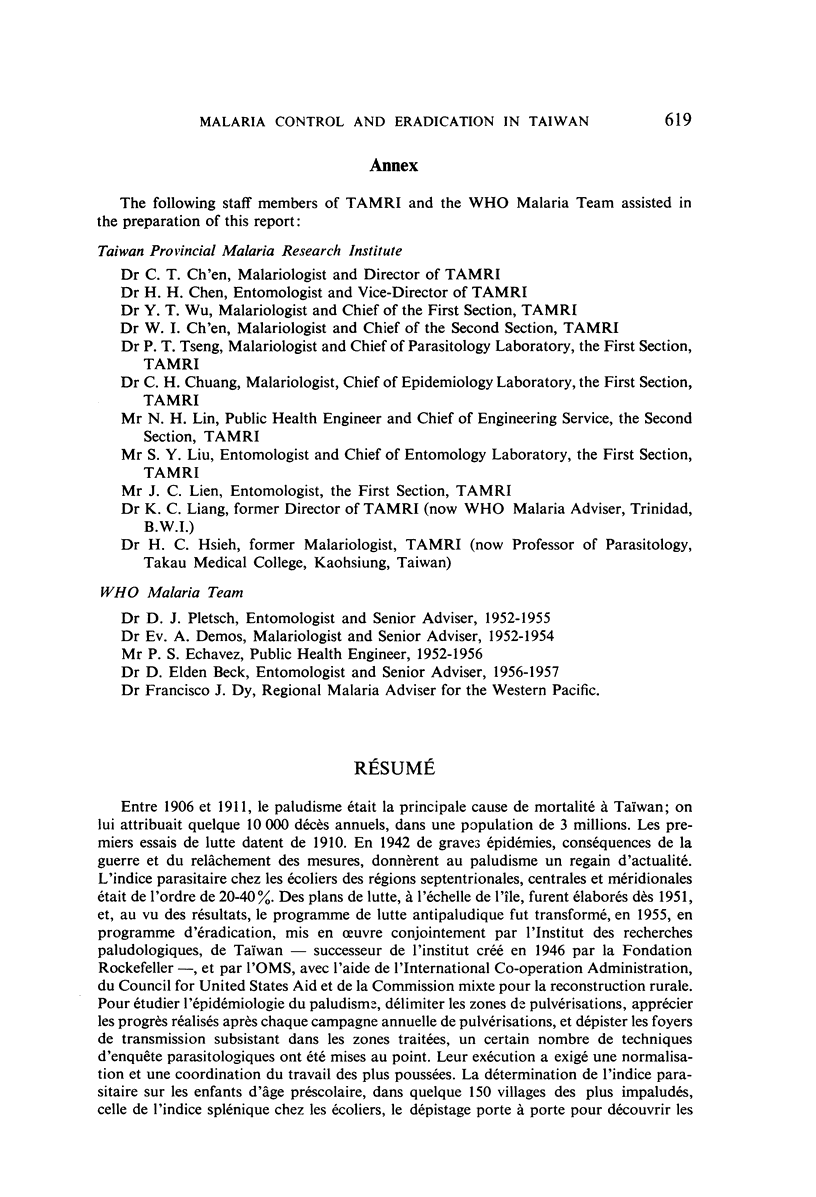
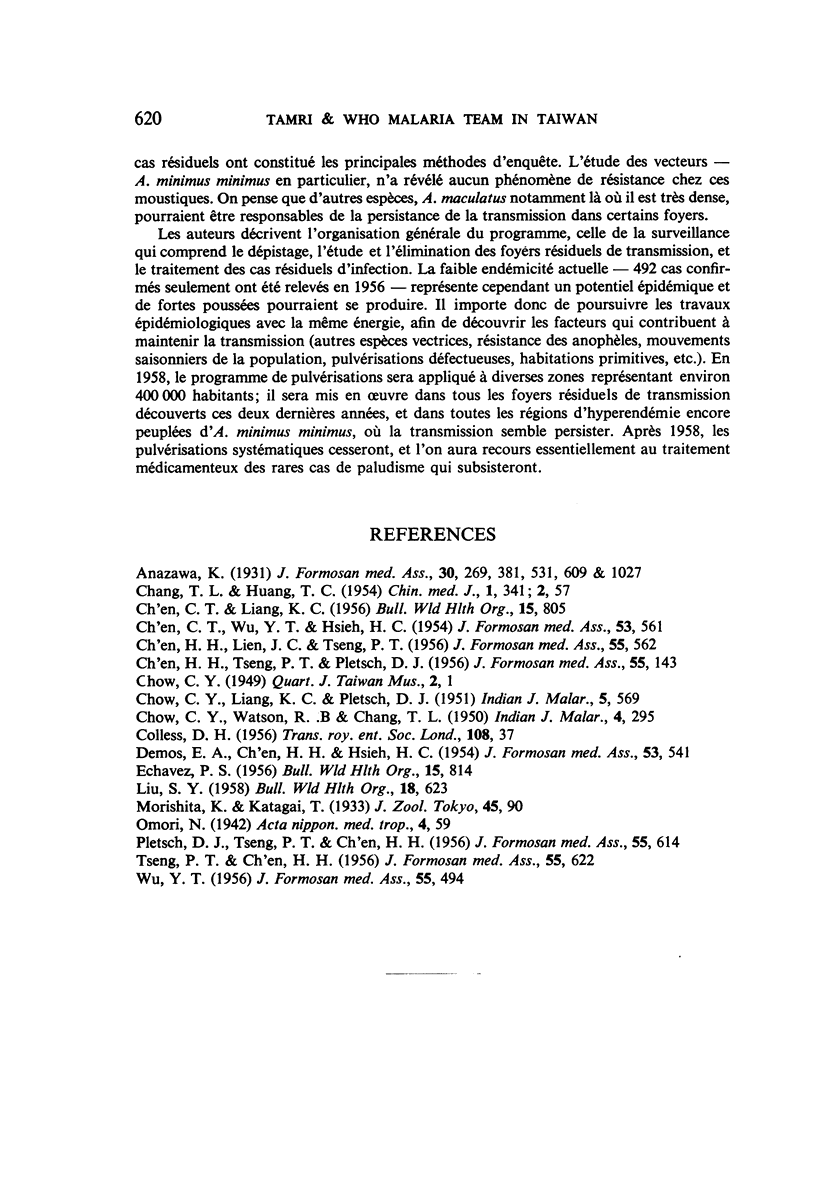
Selected References
These references are in PubMed. This may not be the complete list of references from this article.
- CHOW C. Y., LIANG K. C., PLETSCH D. J. Observations on anopheline populations in human dwellings in Southern Taiwan (Formosa). Indian J Malariol. 1951 Dec;5(4):569–577. [PubMed] [Google Scholar]
- CHOW C. Y., WATSON R. B., CHANG T. L. Natural infection of anopheline mosquitoes with malaria parasites in Formosa. Indian J Malariol. 1950 Sep;4(3):295–300. [PubMed] [Google Scholar]
- ECHAVEZ P. S. A multi-outlet pump used in the Taiwan malaria control programme. Bull World Health Organ. 1956;15(3-5):814–816. [PMC free article] [PubMed] [Google Scholar]


